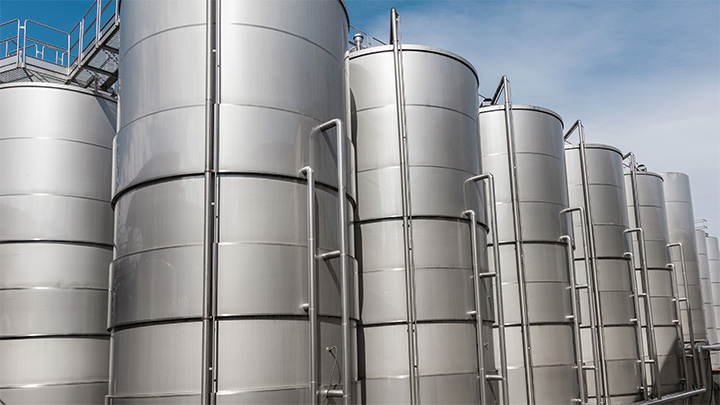Ultrasonic Level Sensors: Keeping Bulk Storage Tanks in Check

What Are Bulk Storage Tanks?
Bulk storage tanks are large containers that store liquids, often ranging from 10 to 32 feet high. They are commonly made of plastic, fiberglass, or metal and are typically cylindrical in shape. Depending on the liquid they hold, some tanks are lined with a protective layer to prevent damage. These tanks operate under specific environmental regulations and may include safety features like secondary walls to contain spills.
Why Monitor Liquid Levels?
One of the most important tasks when managing bulk storage tanks is keeping an eye on the liquid levels. This prevents the tank from overflowing or running dry, ensuring smooth operations. Ultrasonic level sensors are a popular choice for this because they provide accurate and reliable measurements.

Reflective Ultrasonic Level Transmitter w/Alarm for Small Tanks
How Do Ultrasonic Level Sensors Work?
These sensors send out ultrasonic sound waves that bounce off the liquid’s surface and return to the sensor. The time it takes for the wave to return is used to calculate the distance to the liquid. This data is then converted into a readable output, helping operators monitor liquid levels in real-time.
Best Practices for Installation
For accurate readings, follow these tips:
- Place the sensor where it has a clear view of the liquid. Avoid obstructions like pipes or ladders inside the tank.
- Install the sensor above the highest liquid level. It should never be submerged during normal use.
- If the tank is outdoors, condensation or extreme temperatures can interfere with the sensor. Applying a thin layer of petroleum jelly to the sensor can help.
Handling Challenges like Foam and Vapour
- Foam: Foam on the liquid surface can disrupt the sensor’s accuracy. A standpipe or an extended fill pipe can help reduce foam interference.
- Vapour: Vapours, especially from corrosive liquids, can weaken the sensor’s signal. Use a stronger sensor and ensure proper tank ventilation.
Mounting Options
You can mount the sensor in several ways, depending on the tank design:
- Tank Adapter or Coupling: Use adapters or couplings that provide a flat, stable mounting point. Avoid threaded adapters that are prone to leaks.
- Stand-Pipe: A smooth pipe can help isolate the liquid surface for more precise readings. Make sure it’s free of debris or buildup.
- Riser with Flange: For narrow risers, ensure the inner surface is smooth and avoid overly tall risers that could distort readings.
Electrical Setup
Since bulk tanks may be near equipment that generates electrical interference, it’s crucial to ground the sensor and other equipment properly. In areas prone to lightning or power issues, surge protection is highly recommended.
Output and Control
The sensor provides a 4-20 mA signal to indicate liquid levels. This signal can be connected to systems like PLCs or SCADA to automate pumps, valves, or alarms. Always set safety shut-off systems to prevent accidents.
By following these guidelines, ultrasonic level sensors can effectively manage liquid levels in bulk storage tanks, keeping operations safe and efficient. Discover how Omega products can elevate your operations. Contact our Product Specialist today for expert guidance and personalised solutions!



